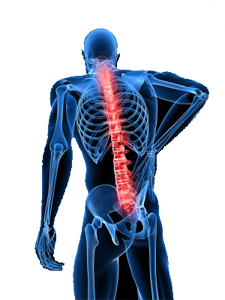
The Cost of Back Injuries
Injuries to the back are one of the most prevalent and costly work-related musculoskeletal disorders in workplaces worldwide.
By investing in well-designed bin lifting equipment, employers can significantly reduce the risk of injury to their staff and can potentially save not only themselves, but the country many times the value of the initial machinery investment.
There is anecdotal and research backed evidence linking back injuries to lifting/forceful movement with evidence of work-relatedness found for awkward posture and heavy physical work.[1] Improper techniques for lifting, pushing, pulling, carrying, bending or twisting the low back also put workers at risk for low-back injury. Moreover, it has been demonstrated that complex, simultaneous trunk motions are associated with increased low back disorder risk.[2]
Statistics NZ reports that 90,600 (43%) of claims for work-related injuries in 2010 were for sprains and strains.
Of these claims, 38,000(18%) were for injuries in the lower torso (abdomen, lower back, lumbar spine, and pelvis).
Between July 2009–June 2010 ACC paid $126.4 million in claim payments for new and ongoing back claims - however, ACC costs are only one part of the overall cost.
Expenses to employers and injured individuals and their families are also significant and need to be included in cost estimates.
For employers, the costs of injuries to staff include not only additional salary expenses for replacement staff but also other costs including:
- Providing induction training for new staff (and temporary replacement staff)
- Paying overtime to other staff to cover for injured staff
- Costs related to increased staff turnover
- Cost of injury investigation, recording details of the injury and notifying ACC, absenteeism and sick leave days (which are not covered by ACC)
- Difficulties for employees returning to work following injuries.
- Replacement costs may include the costs of:
- Advertising and recruitment
- Loss of profits as key business tasks may be interrupted by staff shortages
- Hiring (e.g. paperwork, background checks and moving and travel expenses)
- Orientation and training for new staff
- Termination for long-term staff who leave
- Loss of organisational knowledge
Source: Statistics NZ, ACC
In the United States, lower-back pain adversely affects 1,000,000 workers every year and is responsible for more lost work days than any other musculoskeletal disorder. In 1998, more than 440,000 people missed work for at least one day due to a back injury, accounting for one quarter of all nonfatal injuries/illnesses causing people to be absent from work. Most workers with back injury return to work quickly, but the minority who do not account for the majority of associated costs and health care. On average, people with back injuries miss an average of six working days. However, nearly 20 percent of persons with back injuries missed more than 31 days of work. One quarter of all compensation indemnity claims involve back injuries with an economic cost of billions of dollars to industry, without consideration of the pain, suffering and impact upon quality of life.
Source: University of Minnesota
A suitable manual handling programme typically includes:
- A no-lift or similar policy
- Risk assessment
- Provision of M&H equipment
- Designing facilities for manual handling to be minimised
- Training
Wheelie bins were not designed to be lifted by hand, they were designed to be lifted by machines.
Simpro is ready to help you prevent back injuries that can be sustained by lifting wheelie bins - contact us today to find out what machine will work best for your application!
